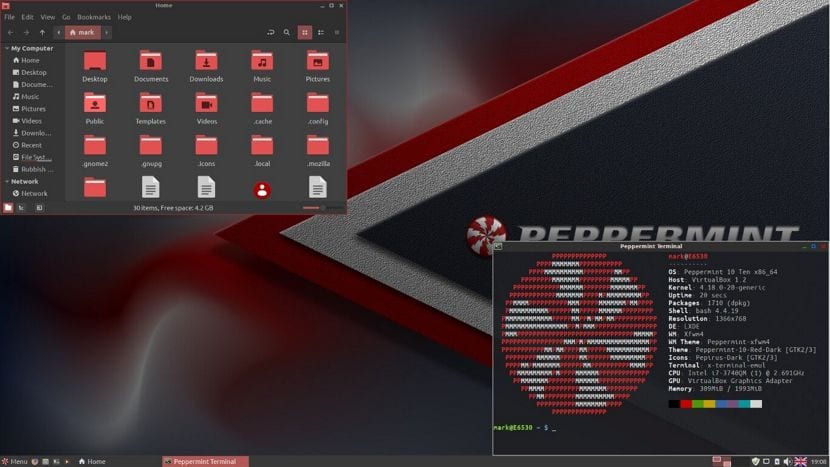
After almost 11 months of releasing the previous version of Peppermint 9 the new version Peppermint 10 arrives which is still based on Ubuntu 18.04 LTS, but this time in the second update version being "Ubuntu 18.04.2 LTS".
If you are still unfamiliar with Peppermint OS, let me tell you that this is one of those Ubuntu-based distributions, even though, unlike others, this is a distribution that is based on one of the Ubuntu flavors which is Lubuntu.
With this we can begin to give an idea of the approach it has. Peppermint OS is a lightweight Linux distribution, this is based on Mozilla's Prism technology.
Which gives the distribution the ability to integrate web-based applications. In this way Peppermint OS is presented as an alternative to cloud-based systems such as Chrome OS.
This distribution has a hybrid system so to call it, since it allows us to have the integration of web applications in the system, as well as native applications that can be installed on which Linux system.
In this way, the users of the distribution can save a quantity of resources, since the web applications are executed on the server side and only the client (Peppermint OS) is in charge of executing them without spending the resources that this entails.
This Linux distribution has its own tool called Ice, with it basically what it allows you to do is take any website with the help of your favorite web browser and turn it into a web application.
What's new in Peppermint OS 10?
In this new release of Peppermint OS 10 highlights the update of the base system to "Ubuntu 18.04.2" and the inclusion of the updated Linux kernel 4.18.0-18, X.Org Server 1.20.1 and Mesa 18.2 drivers.
Within One of the changes that we will find in Peppermint OS 10 is the automatic installation of the NVIDIA proprietary drivers, if the option "Install third-party drivers / software" is selected in the installer.
The Ice component which provides separate launch of web applications as separate programs, adds support for isolated profiles for Chromium, Chrome and Vivaldi SSB it has been updated to version 6.0.2.

On the other hand, bookmarks have been added to Firefox to simplify the installation of add-ons and change the configuration.
As for the changes in the system added a new utility to adjust DPI when displaying system fonts as well as the new version of Nemo file manager 4.0.6, the mintinstall 7.9.7 application installation program, the mintstick 1.39 USB storage format utilities, neofetch 6.0.1 system information output utilities, xed 2.0.2 text editor, xplayer 2.0 media player have been ported since Linux Mint. Image viewer .2 and xviewer 2.0.2.
Of the other news that stand out from this Peppermint OS 10 release:
- In this new version, the evince document reader will be replaced by xreader
- Instead of i3lock, now the light-locker and light-locker configuration packages are used to lock the screen.
- Network-manager-pptp-gnome is included in the delivery by default, just as network-manager-openvpn-gnome has been added to the repository.
- A new Peppermint-10 profile configuration panel has been added to xfce-panel-switch
- New GTK themes with different colors were added to the system. The xfwm4 theme is aligned with the GTK themes
- Changed boot and shutdown screen layout
Download Peppermint OS 10
If you are not a user of the distribution and want to use it on your computer or test it in a virtual machine.
You can obtain the image of the system, you only have to go to the official website of the project where you can download the image in its download section.
At the end of your download you can use Etcher to save the image to a pendrive and thus boot your system from a USB.
The size of the ISO image is 1.4 GB.
I use this distro on a modest NetBook with only 1GB of RAM and… it moves well. Of course, it doesn't fly, but it's going well, I can't complain. When it comes to navigating, it is quite fluid. I can't imagine what it could do with 2GB of RAM.
It will definitely stay on my NetBook as the primary OS.
Hello, I am new to Linux, I just installed Peppermint 10 to my small ACER Aspire one D255E laptop with an Intel Atom N570 processor and 2 GB memory… It works fine for me, but I would like to know how I can ENABLE ROOT ON MY LINUX PEPPERMINT OS 10???.
I thank you for the help. Thank you.
Best regards, Ramiro